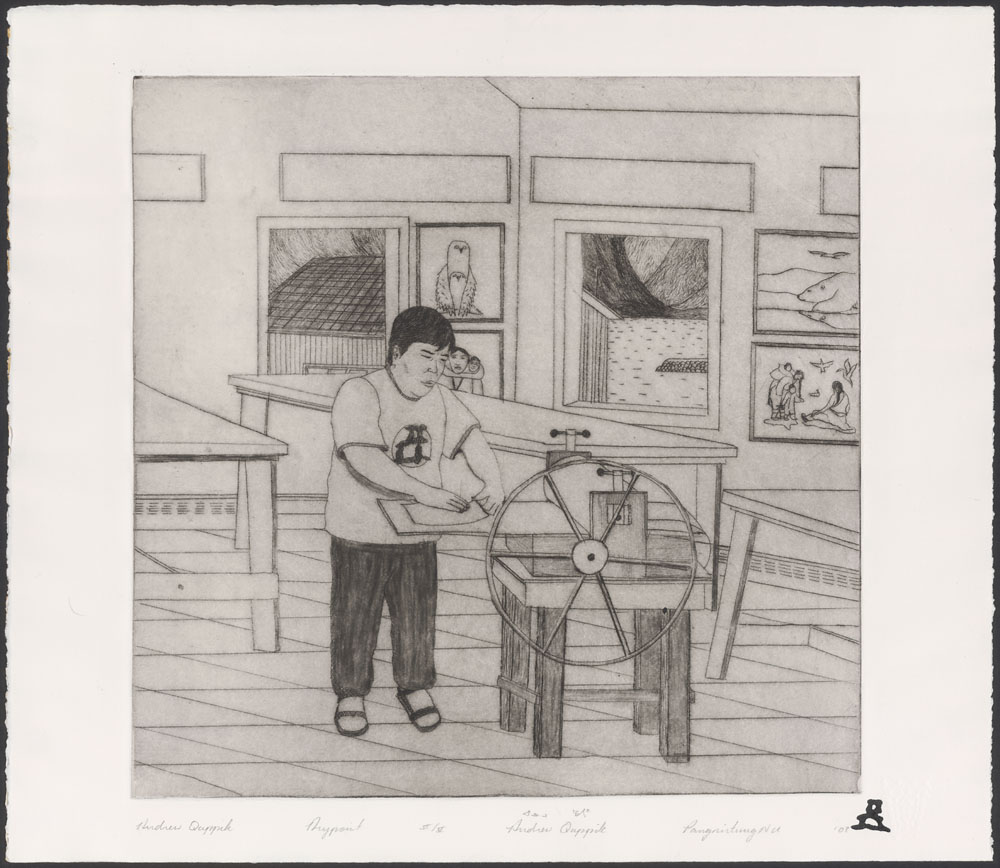Article
Académie de musique du Québec
Académie de musique du Québec (AMQ). (Académie de musique de Québec, 1868-1988). Non-profit association whose teacher-members are among the most representative Quebec musicians in the various disciplines.

Enter your search term
Signing up enhances your TCE experience with the ability to save items to your personal reading list, and access the interactive map.
Create AccountArticle
Académie de musique du Québec (AMQ). (Académie de musique de Québec, 1868-1988). Non-profit association whose teacher-members are among the most representative Quebec musicians in the various disciplines.
"https://www.thecanadianencyclopedia.ca/images/tce_placeholder.jpg?v=e9dca980c9bdb3aa11e832e7ea94f5d9" // resources/views/front/categories/view.blade.phphttps://www.thecanadianencyclopedia.ca/images/tce_placeholder.jpg?v=e9dca980c9bdb3aa11e832e7ea94f5d9

Article
Founded 9 December 1944 as Académie canadienne-française by a group of writers led by Victor Barbeau, its goal was to serve and defend the French language and culture in Canada. The Académie changed its name in 1992.
"https://www.thecanadianencyclopedia.ca/images/tce_placeholder.jpg?v=e9dca980c9bdb3aa11e832e7ea94f5d9" // resources/views/front/categories/view.blade.phphttps://www.thecanadianencyclopedia.ca/images/tce_placeholder.jpg?v=e9dca980c9bdb3aa11e832e7ea94f5d9

Article
Founded in 1979, the Academy of Canadian Cinema & Television (ACCT) is a national non-profit professional association dedicated to the promotion, recognition and celebration of exceptional achievements in Canada’s film, television and digital media industries.
"https://d3d0lqu00lnqvz.cloudfront.net/media/media/3f1bdd82-7550-4dd9-9d82-812e4a3907f1.jpg" // resources/views/front/categories/view.blade.phphttps://d3d0lqu00lnqvz.cloudfront.net/media/media/3f1bdd82-7550-4dd9-9d82-812e4a3907f1.jpg

Article
Academy of Music/Académie de musique. Name given to several 19th-century theatres. The best-known were those in Montreal, Quebec City and Halifax. Several theatres of the same name existed in other cities, including Sherbrooke and Sorel.
"https://www.thecanadianencyclopedia.ca/images/tce_placeholder.jpg?v=e9dca980c9bdb3aa11e832e7ea94f5d9" // resources/views/front/categories/view.blade.phphttps://www.thecanadianencyclopedia.ca/images/tce_placeholder.jpg?v=e9dca980c9bdb3aa11e832e7ea94f5d9

Article
The Agnes Etherington Art Centre, located in Kingston, Ont, is the legacy of Agnes Richardson Etherington (1880-1954) who left her 19th-century Georgian-style house to Queen's University to be used as a permanent art facility for the community.
"https://www.thecanadianencyclopedia.ca/images/tce_placeholder.jpg?v=e9dca980c9bdb3aa11e832e7ea94f5d9" // resources/views/front/categories/view.blade.phphttps://www.thecanadianencyclopedia.ca/images/tce_placeholder.jpg?v=e9dca980c9bdb3aa11e832e7ea94f5d9

Article
Alberta Jubilee Auditoriums, Northern (Edmonton) and Southern (Calgary). Built between 1955 and 1957 as a memorial to Alberta's pioneers.
"https://www.thecanadianencyclopedia.ca/images/tce_placeholder.jpg?v=e9dca980c9bdb3aa11e832e7ea94f5d9" // resources/views/front/categories/view.blade.phphttps://www.thecanadianencyclopedia.ca/images/tce_placeholder.jpg?v=e9dca980c9bdb3aa11e832e7ea94f5d9

Article
Andrew Qappik, CM, RCA, Inuk graphic artist and printmaker (born 25 February 1964 in Nunataq, in what is now known as Nunavut). Qappik helped design the Nunavut flag and coat of arms, as well as the logo for the Government of Nunavut. In 2017, he was appointed to the Order of Canada “for his contributions to defining the visual culture of Nunavut as a master printmaker and sculptor.” He is based in Panniqtuuq (Pangnirtung), Nunavut.
"https://d3d0lqu00lnqvz.cloudfront.net/AndrewQappik/e010900306-v8.jpg" // resources/views/front/categories/view.blade.phphttps://d3d0lqu00lnqvz.cloudfront.net/AndrewQappik/e010900306-v8.jpg

Article
Anna Wyman Dance Theatre was considered one of Canada's principal modern-dance companies from the mid-1970s until its closure in 1990, helping to define the emerging modern-dance form in Canada.
"https://d3d0lqu00lnqvz.cloudfront.net/media/media/6262e5d1-433c-4c19-80b9-7a926c97d48e.jpg" // resources/views/front/categories/view.blade.phphttps://d3d0lqu00lnqvz.cloudfront.net/media/media/6262e5d1-433c-4c19-80b9-7a926c97d48e.jpg

Article
While the Canadian Heritage Information Network (CHIN) lists nearly 400 art and leisure museums, Canada's major institutions are relatively few in number and often of relatively recent vintage.
"https://d3d0lqu00lnqvz.cloudfront.net/media/media/07073232-3548-469e-941d-a60b8ebcc4a6.jpg" // resources/views/front/categories/view.blade.phphttps://d3d0lqu00lnqvz.cloudfront.net/media/media/07073232-3548-469e-941d-a60b8ebcc4a6.jpg

Article
Art galleries and museums are institutions that collect, preserve, study and present permanent collections of heritage objects to the public. According to the Canadian Museums Association, there are currently over 2300 museums and related institutions in Canada.
"https://d3d0lqu00lnqvz.cloudfront.net/media/media/497492ef-da54-4767-acf9-8c04f5884787.MOV" // resources/views/front/categories/view.blade.phphttps://d3d0lqu00lnqvz.cloudfront.net/media/media/497492ef-da54-4767-acf9-8c04f5884787.MOV

Article
Hopes of constructing a new building for the gallery's growing collection came to fruition in 1962 when Mrs. A.E. Condell bequeathed funds for a new gallery in the name of her son, Arthur Blow Condell. Architects Donald G. Bittorf and B.
"https://d3d0lqu00lnqvz.cloudfront.net/media/media/07073232-3548-469e-941d-a60b8ebcc4a6.jpg" // resources/views/front/categories/view.blade.phphttps://d3d0lqu00lnqvz.cloudfront.net/media/media/07073232-3548-469e-941d-a60b8ebcc4a6.jpg

Article
The Art Gallery of Greater Victoria was founded in 1946 and has been in its current location since 1950. At the heart of the gallery complex is the historic Spencer mansion which was built in 1889.
"https://d3d0lqu00lnqvz.cloudfront.net/media/media/eb27f928-be28-4c7d-b678-46d44fcc767b.jpg" // resources/views/front/categories/view.blade.phphttps://d3d0lqu00lnqvz.cloudfront.net/media/media/eb27f928-be28-4c7d-b678-46d44fcc767b.jpg

Article
Art Gallery of Hamilton was founded in 1914 on the occasion of a bequest of paintings from the Estate of William Blair Bruce (1859-1906), and developed through the efforts of two former Directors, T.R. MacDonald (1947-1973) and Glen Cumming (1973-1989).
"https://www.thecanadianencyclopedia.ca/images/tce_placeholder.jpg?v=e9dca980c9bdb3aa11e832e7ea94f5d9" // resources/views/front/categories/view.blade.phphttps://www.thecanadianencyclopedia.ca/images/tce_placeholder.jpg?v=e9dca980c9bdb3aa11e832e7ea94f5d9

Article
The Art Gallery of Ontario, founded in 1900 as the Art Museum of Toronto, became the Art Gallery of Toronto in 1919 and in 1966 - reflecting an expanded role in the province - the Art Gallery of Ontario.
"https://d3d0lqu00lnqvz.cloudfront.net/media/media/9878b39f-4c3f-4d77-b188-ac1726650546.jpg" // resources/views/front/categories/view.blade.phphttps://d3d0lqu00lnqvz.cloudfront.net/media/media/9878b39f-4c3f-4d77-b188-ac1726650546.jpg

Article
The Art Gallery of Windsor began in 1943 in Willistead Manor, where exhibitions borrowed from other galleries and organizations could be displayed. Incorporated in 1944, the gallery soon began building its own collection and presenting exhibitions and education programs.
"https://d3d0lqu00lnqvz.cloudfront.net/media/media/985f2ab8-ea48-43f3-820c-64c3582a7f28.jpg" // resources/views/front/categories/view.blade.phphttps://d3d0lqu00lnqvz.cloudfront.net/media/media/985f2ab8-ea48-43f3-820c-64c3582a7f28.jpg
